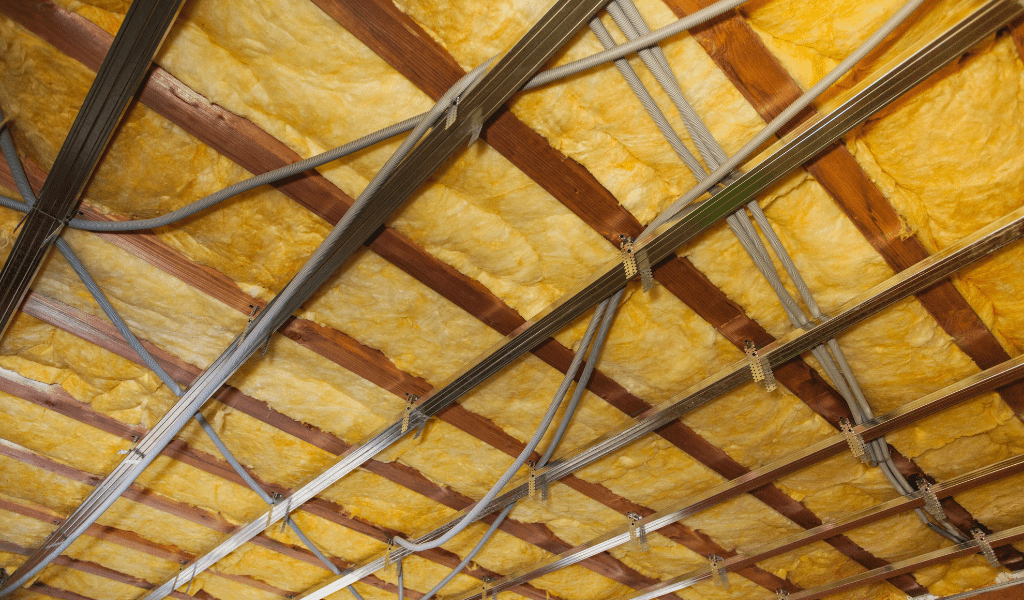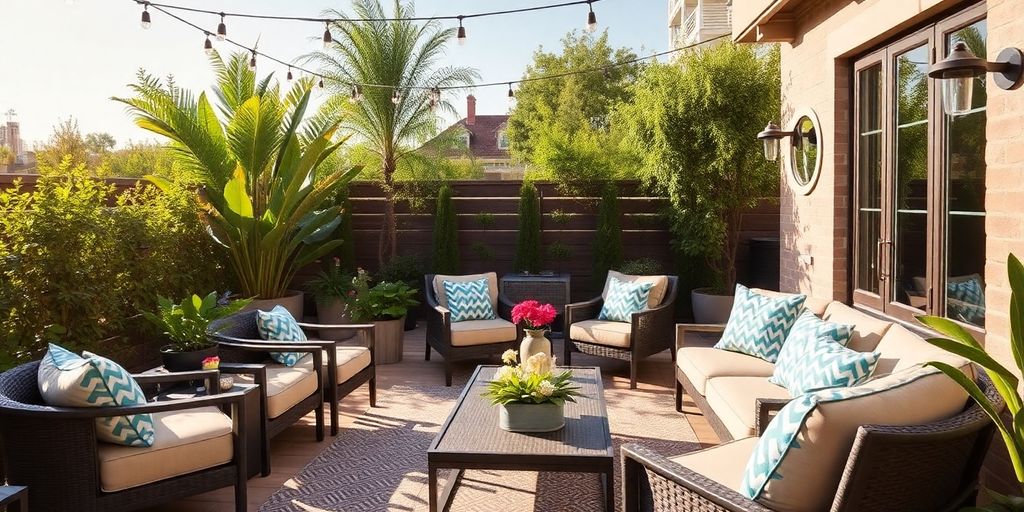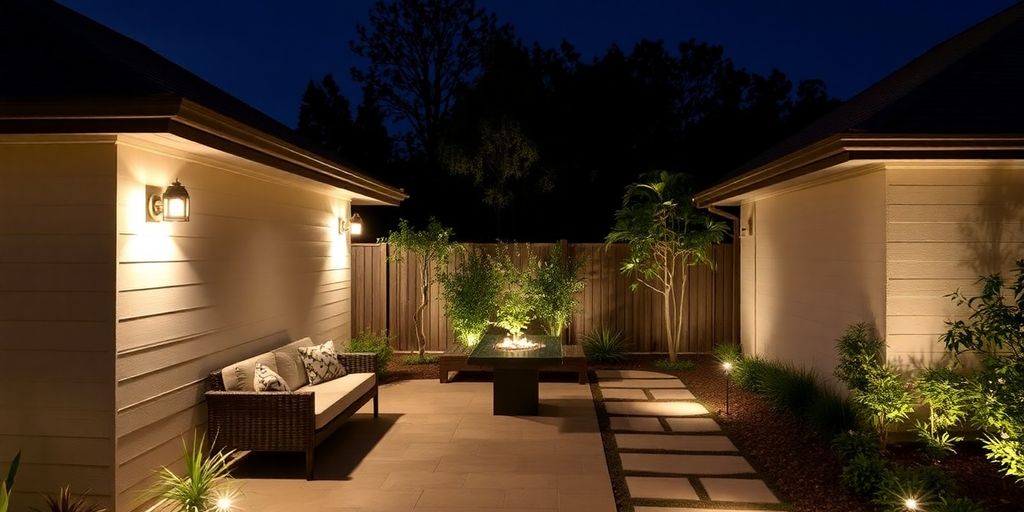Is your insulated patio roof showing signs of wear and tear? Do you suspect it may be time for a replacement? In this article, we’ll discuss six key indicators that suggest your patio roof might need immediate attention. From leaks and water damage to sagging or warping, noticing these signs are crucial for maintaining the safety and comfort of your outdoor living space.
Don’t wait until it’s too late—protect your investment and your family’s well-being by addressing these issues promptly. Contact One Stop Patio Shop for expert patio design Perth. We’re always here to help with advice and assistance in determining whether a roof replacement is necessary and to help you restore your patio to its optimal condition.
#1 Leaks and water damage
One of the most obvious signs that your patio roof needs replacement is the presence of leaks or water damage. Inspect your patio roof for dark spots, discolouration, and dripping water. Additionally, look for signs of water damage on the patio floor and adjacent walls.
Causes of leaks and water damage
Leaks and water damage to insulated patio roofs can result from a variety of factors. One such cause is poor installation or the use of substandard materials. Additionally, roofing material deterioration due to weather exposure can lead to cracks and gaps that allow water infiltration.
Gutter issues, such as damage or clogging, can also contribute to water damage. Inadequate flashing installation or damage can allow water to penetrate the roof system. Insufficient ventilation can lead to condensation and water damage while ponding water due to poor drainage or inadequate slope can cause leaks over time.
Roof penetrations, such as vents or skylights, create openings where water can enter if not properly sealed. Lastly, tree damage from overhanging branches or debris, as well as pest damage to roof materials, can also result in leaks and water damage.
Consequences of untreated leaks and water damage
Prolonged exposure to water can lead to mould and mildew growth, posing health risks to your family. Moreover, water damage can weaken the structure, compromising the overall integrity of your patio and potentially leading to costly repairs.
#2 Sagging or warping
A sagging or warped insulated patio roof is a clear sign that it has been compromised. Look for uneven or curved sections, which may be more evident after heavy rain or snowfall.
Reasons for sagging or warping
Sagging or warping of insulated patio roofs can result from several factors. Structural issues, such as inadequate beams, joists, or columns, can lead to these problems due to poor design, substandard materials, or improper installation. Overloading the roof with excessive weight, such as heavy debris or extra roofing materials, can also cause sagging or warping.
Moisture damage from prolonged exposure to water can weaken the roof materials and structure, leading to sagging or warping. This may occur due to leaks, poor ventilation, or inadequate waterproofing. Additionally, as the roof ages, materials can deteriorate, weaken, and lose their structural integrity, leading to sagging or warping over time.
Inadequate insulation can also contribute to these issues, as it can cause uneven weight distribution on the roof. Furthermore, thermal expansion and contraction due to frequent temperature fluctuations can cause roofing materials to warp or distort over time. Finally, improper installation of the roofing materials or fasteners can lead to uneven tension and stress on the roof, resulting in sagging or warping.
Risks associated with sagging or warped roofs
A sagging or warped roof is dangerous and should be replaced immediately. It can collapse, causing injuries or property damage. Furthermore, structural instability can make your patio vulnerable to damage from wind and other external forces.
#3 Damaged or corroded fasteners
Examine the fasteners and connections that hold your patio roof together, including screws, nails, and brackets. If you find rust, corrosion, or other signs of deterioration, it may be time to replace your roof.
Causes of fastener damage
Fastener damage in insulated patio roofs can occur for several reasons. One potential cause is the use of substandard or inappropriate fasteners, which may corrode, rust, or deteriorate more quickly when exposed to the elements. Using the right type of fasteners, such as those made from stainless steel or other corrosion-resistant materials, is crucial for preventing fastener damage. Another cause of fastener damage is improper installation. If fasteners are not installed correctly, they may not provide the required support, leading to potential damage or even failure.
Environmental factors can also contribute to fastener damage. Exposure to harsh weather conditions, such as high winds, heavy rain, or fluctuating temperatures, can put stress on fasteners, causing them to loosen, corrode, or fail over time. Furthermore, thermal expansion and contraction can cause fasteners to become loose or damaged. When roofing materials expand and contract due to temperature fluctuations, it can put stress on the fasteners, causing them to weaken or fail.
Lastly, damage to the surrounding materials, such as the roofing or insulation, can also impact the fasteners. If these materials become damaged, it can affect the fasteners’ ability to provide adequate support and may lead to fastener damage or failure.
Implications of damaged or corroded fasteners
Damaged fasteners can weaken the entire structure, increasing the risk of collapse. This can pose a threat to your family’s safety and result in significant property damage.
#4 Insulation deterioration
If you notice that your insulated patio roof is no longer maintaining the desired temperature, it may be due to insulation degradation. Check for drafts, uneven temperature distribution, and increased energy bills.
Causes of insulation deterioration
Insulation deterioration in insulated patio roofs can occur due to various factors. One common cause is moisture infiltration, which can result from leaks or poor ventilation. When insulation becomes damp, it loses its effectiveness and can lead to mould and mildew growth, further damaging the insulation and surrounding materials.
Improper installation can also contribute to insulation deterioration. If the insulation is not correctly fitted, it may not provide adequate protection, and gaps or uneven coverage can reduce its effectiveness. Over time, this can result in insulation material breaking down and losing its insulating properties.
Age and wear play a role in insulation deterioration as well. Over time, insulation materials can break down, compact, or lose their effectiveness due to natural wear and tear or exposure to the elements. Regular inspection and maintenance can help identify any signs of ageing and deterioration in insulation materials.
Pest infestations can also lead to insulation deterioration. Birds, rodents, and insects can damage insulation materials by nesting, burrowing, or feeding on them. Preventing and addressing pest infestations is essential to maintaining the integrity of the insulation.
Finally, exposure to harsh environmental conditions or temperature fluctuations can cause insulation materials to degrade over time. These factors can result in the insulation losing its effectiveness in regulating heat transfer, leading to increased energy consumption and reduced comfort.
Consequences of poor insulation
Deteriorated insulation can result in increased energy costs, reduced protection from the elements, and discomfort for those using the patio space.
#5 Visible cracks or holes
Inspect your patio roof for visible cracks or holes in the roofing material. These openings can allow water, insects, and other unwanted elements to enter your patio space, compromising its functionality and comfort.
Causes of cracks and holes
Cracks and holes in insulated patio roofs can develop due to a range of factors. One potential cause is the natural ageing and deterioration of roofing materials. Over time, exposure to the elements, such as sun, rain, and wind, can cause materials to weaken and develop cracks or holes. Particularly in Australia, installing patio roofing material that can withstand the harsh sun day after day is critically important—learn more about our SolarSpan patio roofs here.
Improper installation or the use of substandard materials can also contribute to the development of cracks and holes. Poorly installed roofing materials may not provide adequate support or protection, leading to weak points where cracks or holes can form. Ensuring the proper installation of high-quality materials is crucial for preventing these issues.
Thermal expansion and contraction can result in cracks and holes as well. Fluctuations in temperature cause roofing materials to expand and contract, which can lead to stress on the materials, eventually causing them to crack or develop holes. Physical damage to the roof, such as impacts from falling debris, branches, or hail, can also cause cracks and holes.
In some cases, pest activity can lead to the formation of cracks and holes. Birds, rodents, or insects may damage the roofing materials while nesting, burrowing, or feeding, compromising the roof’s integrity. Lastly, structural issues or movement in the building itself can contribute to the development of cracks and holes. Changes in the foundation or support structure may cause the roof to shift, leading to stress on the materials and the formation of cracks or holes.
Problems associated with cracks and holes
Visible cracks and holes can compromise the insulation and structural integrity of your patio roof, leading to energy loss and potential damage to your home. They can also provide an entry point for pests, which can cause further damage to the structure and insulation.
#6 Age of the patio roof
The age of your patio roof is a significant factor in determining whether it needs replacement. Consult any available documentation or contact the original installer to determine the age of your roof. Most insulated patio roofs have a lifespan of 15-20 years, depending on the materials used and the quality of installation and maintenance. Learn more about our guarantee here.
Problems associated with old patio roofs
As your patio roof ages, the materials can break down, leading to decreased performance, increased energy costs, and a higher likelihood of leaks and other issues. Older roofs may also not meet current building codes or insulation standards.
Cost-benefit analysis
Weigh the costs of repairing your existing patio roof against the expense and benefits of installing a new one. In some cases, it may be more cost-effective to replace the roof, especially if multiple issues are present or if the roof is nearing the end of its lifespan. Did you know that by choosing One Stop Patio Shop you can enjoy a new patio now and pay later with up to 18 months of interest-free payments? Learn more here.
Final thoughts
If you’ve spotted any signs that your patio roof needs replacement, act now. Consult with our patios Perth professionals for expert assessment and cost-effective solutions to ensure your outdoor space remains comfortable and secure. Contact One Stop Patio Shop today to protect your investment and your family’s well-being.



